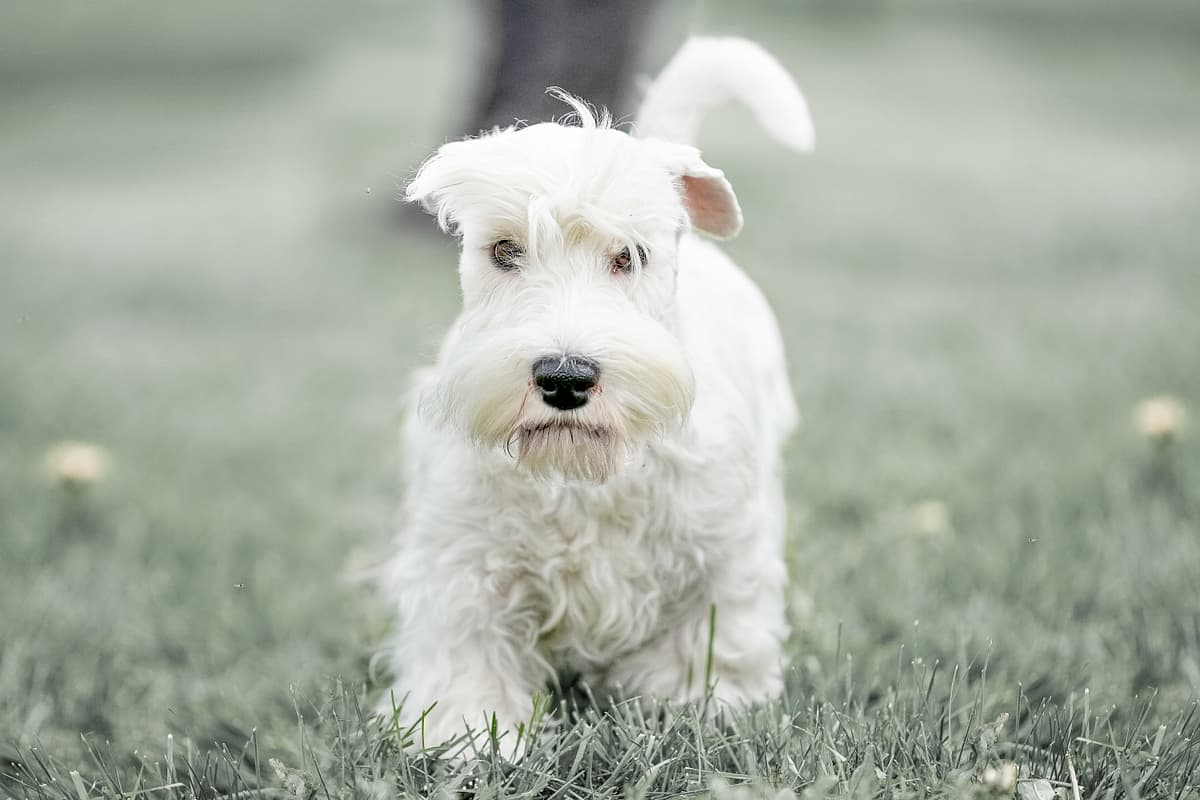Sealyham Terrier vs English Bulldog
Discover the differences between Sealyham Terrier and English Bulldog to make the best choice for your situation.
Try different breeds

Sealyham Terrier
Compact, spirited, and affectionate, this terrier charms with its bold personality and sense of humor. Adaptable and loyal, it makes a devoted companion for families or singles.

English Bulldog
Stocky, courageous, and affectionate, this breed charms with its wrinkled face and calm nature. Loyal and gentle, it thrives as a loving family companion.
Quick comparison
Small
8–9 kg
Dense, weather-resistant
12–14 years
8–9 kg
Moderately active
Medium
23–25 kg
Short, smooth
8–10 years
18–23 kg
Low activity needs
Personality & behavior
Compare the personality traits and behavioral characteristics of both breeds.
Sealyham Terrier
Generally sociable with family and familiar people
Quick learner, responds well to training
Moderate activity needs, enjoys regular exercise
Enjoys play but not highly boisterous
Adjusts well to various home environments
English Bulldog
Affectionate and gentle with family and children
Learns basic commands with some patience
Prefers lounging over vigorous physical activity
Enjoys play but tires fairly quickly
Adjusts well to most living environments
Care needs
Exercise, grooming, and daily care requirements
Sealyham Terrier
Lens luxation, deafness
English Bulldog
Brachycephalic syndrome, skin fold infections
Suitability
How well each breed fits different living situations and families
Sealyham Terrier
Good option
Responsive and adaptable, but needs consistent training and socialization from new owners
Apartment friendly
Compact size and moderate exercise needs suit apartment environments well
Moderately suitable
Enjoys play but does not require high activity levels
Generally good
Tolerates respectful children but may be reserved with rough play
Needs supervision
Can coexist with other pets if socialized early, but may chase small animals
Not recommended
Dislikes long periods alone and may develop separation anxiety or unwanted behaviors
English Bulldog
Good option
Easygoing, low-maintenance nature suits owners with limited dog experience
Excellent fit
Moderate exercise needs and calm demeanor work well in small living spaces
Not ideal
Low stamina and breathing issues make them unsuited for high-activity lifestyles
Very suitable
Gentle, patient, and tolerant with young children when properly socialized
Usually compatible
Generally sociable but may need guidance with other pets, especially dogs
Not recommended
They struggle with long periods alone and are prone to separation anxiety
Breed strengths
What each breed excels at and their best qualities
Sealyham Terrier
- Loyal to family members
- Good watchdog instincts
- Generally friendly with other dogs
- Adaptable to apartment living
- Low-shedding, hypoallergenic coat
English Bulldog
- Affectionate with family members
- Generally good with children
- Low exercise requirements
- Minimal grooming needs
- Adaptable to apartment living
Challenges & considerations
Potential challenges and considerations for each breed
Sealyham Terrier
- Prone to stubborn, independent behavior
- Can be wary of strangers
- Needs regular coat hand-stripping
- May chase small animals due to prey drive
- Can develop separation anxiety
English Bulldog
- Prone to respiratory problems
- High risk of overheating
- Susceptible to skin infections
- Can be stubborn during training
- Tends to drool frequently
Ready to choose your perfect breed?
Learn more about each breed or compare other breeds to find the perfect match for your lifestyle.
Discover more helpful tools
Make use of our other free tools to get the most out of your pet experience
